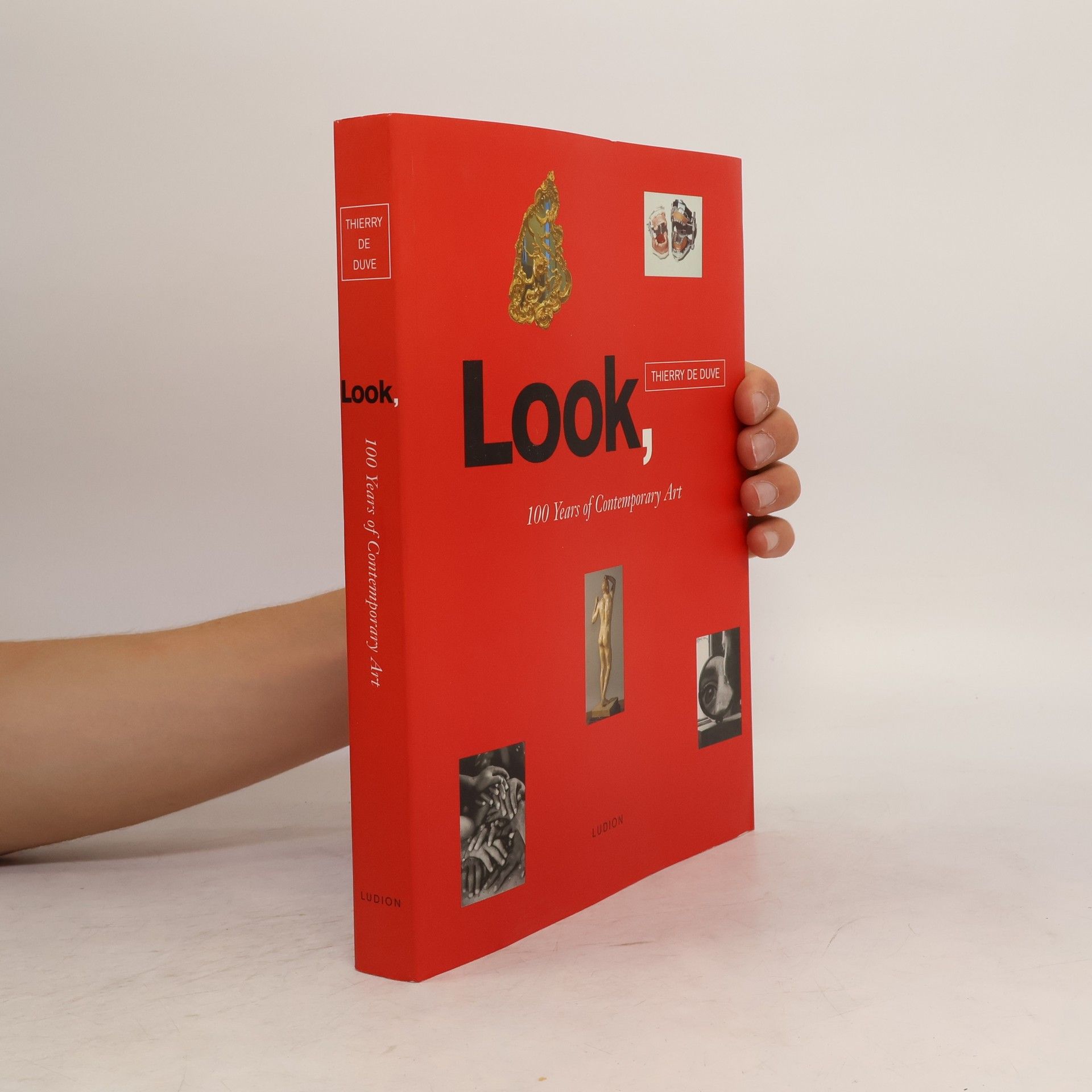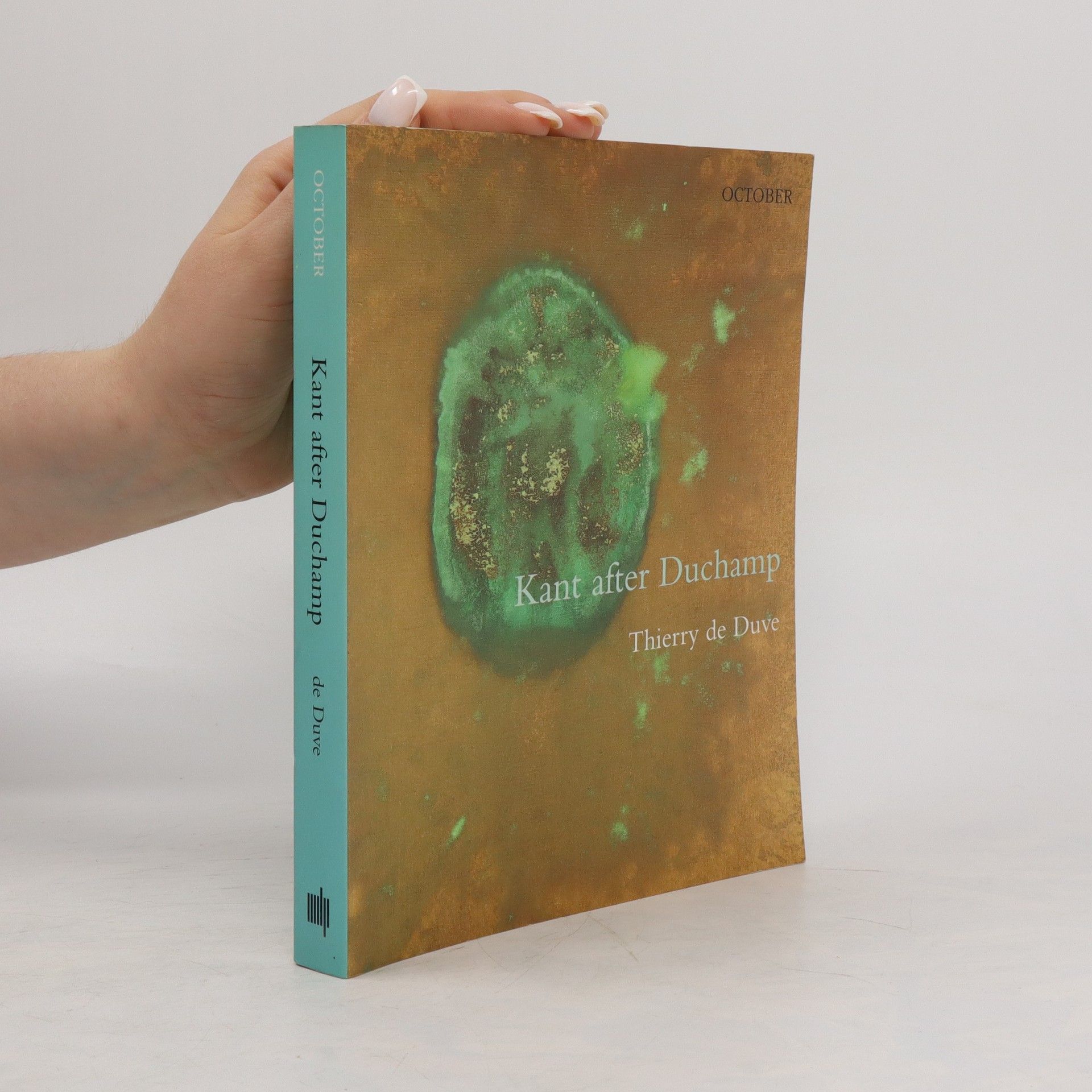Aesthetics at Large
- 248 stránok
- 9 hodin čítania
Thierry de Duve je belgický učenec v oblasti dejín a teórie moderného a súčasného umenia, ktorý sa zameriava na reinterpretáciu modernizmu. Jeho skoršie diela sa často zaoberajú výzvami, ktoré predstavujú ready-mades Marcela Duchampa, a ich dôsledkami pre estetiku. De Duve načrtáva estetickú teóriu umenia, ktorá aktualizuje Kantovu estetiku nahradením výroku „toto je krásne“ výrokom „toto je umenie“ a prehodnocuje modernizmus, pričom uznáva jeho zlyhanie. Pre neho umenie nemá podstatu, je to jednoducho to, čo nazývame umením, a tvorba umenia odráža tragické úsilie reagovať na mesiášske túžby po tom, ako by mal život vyzerať, zatiaľ čo je informovaná postmoderným vyčerpaním z naivity a nevyhnutného zlyhania modernizmu.






Kat. Ausst. Kunstraum München, Glyptothek München, Kunstforum München. München: Kunstraum München, 1983. Texte von Helmut Friedel, Barbara Hammann und Luise Horn (dt. und engl.). 103 Seiten, 65 Abb., davon 25 in Farbe. 27,5 x 23 cm. Softcover. ISBN 978-3-923874-38-5 (3-923874-38-3)
The late critic Clement Greenberg remains best known as the man who almost single-handedly put Jackson Pollock, Barnett Newman and Clyfford Still on the map of modern art. His formalist conception of art was violently contested by the succeeding generation of artists and critics, who found Greenberg's approach narrow and dogmatic. In this aptly titled study, art historian Thierry de Duve offers a long-overdue reassessment of Greenberg's work, stripping the mask off the familiar icon of modernism. Giving his seminal essays the most careful rereading in years, de Duve reveals an unexpected Greenberg, a passionate art lover open to changes in judgment, a cultured student of modernity and a subtle theorist at odds with nascent postmodernity. An invaluable reference for anyone interested in how critics help to shape the culture they write about.
Kant after Duchamp brings together eight essays around a central thesis with many implications for the history of avant-gardes. Although Duchamp's ready mades broke with all previously known styles, de Duve observes that he made the logic of modernist art practice the subject matter of his work, a shift in aesthetic judgment that replaced the classical "this is beautiful" with "this is art." De Duve employs this shift (replacing the word "beauty" by the word "art") in a rereading of Kant's Critique of Judgment that reveals the hidden links between the radical experiments of Duchamp and the Dadaists and mainstream pictorial modernism.
Reveals the invention of the readymade as a critical point in contemporary art. Arguing that the readymade belongs to that moment in the history of painting when both figuration and the practice of painting become impossible, this book presents a psychoanalytically informed account of the birth of abstraction.
A complete overview of the pioneering artist who brought photography to contemporary art.
A reading of Duchamp's 'telegram' to the art world, a urinal signed R. Mutt.
Spätestens 1970 hat die Kunst eine Schwelle erreicht, nach der alles möglich, alles erlaubt zu sein scheint. Durch diese Situation ist kunsttheoretisch insbesondere der Begriff des Fortschritts, und mit ihm: ein ganzes Geschichtsmodell, in die Krise geraten. Die erneuerte Rede vom "Ende der Kunst" zeugt davon ebenso wie die Ablösung der modernen Werkästhetik durch Theorien der ästhetischen Erfahrung. Während sich mithin in der philosophischen Ästhetik eine generelle Skepsis gegenüber der geschichtlichen Platzierung von Werken oder künstlerischen Strategien eingestellt hat, ist eben dies jedoch nach wie vor ein zentrales Anliegen der Kunstkritik. So ist die Feststellung von Neuem für sie ebenso elementar wie dessen normative Auszeichnung: Man kann eben doch nicht alles zu jeder Zeit machen. Und das hat nicht nur einen innerkünstlerischen, sondern immer auch einen gesellschaftlichen und politischen Sinn. Von daher stellt sich die Frage, auf welche Weise heute, mit Blick auf die Entgrenzungstendenzen in der Kunst der letzten vierzig Jahre, - doch oder immer noch - von künstlerischem Fortschritt gesprochen werden kann und welche Konsequenzen dies für den Begriff von Kunst hat. Die Beiträge des Bandes diskutieren diese Frage für Bildende Kunst, Film, Musik, Literatur und Theater.
Publikacja w języku angielskim prezentująca minimalistyczne prace na szkle izraelskiego artysty Nahuma Teveta. Fontanna Marcela Duchampa z 1917 roku, czyli pisuar ogłoszony dziełem sztuki, to dzieło o najwyższej sile oddziaływania w XX wieku, ponieważ niesie dwa najważniejsze przesłania. Po pierwsze, skoro nawet pisuar jest sztuką, to wszystko może być sztuką, to znaczy, że każdy może być artystą. Slogan wszystko ujdzie stawia przed twórcami szczególne zadanie: konieczność zaakceptowania czegoś spośród wszystkiego. Tak narodziła się cała seria szklanych prac Nahuma Teveta. Oprawił on rysunek w ramkę zrobioną z prostych materiałów dostępnych w kibucu, w którym się wychował. Za szklaną taflą umiescił papier, od spodu przytrzymał go tekturą, a wszystko spiął metalowymi klipsami. Z czasem te ubogie środki stały się sposobem na serię minimalistycznych prac. Tym, czy zaakceptować coś pośród wszystkiego, rządzi kilka reguł. Po pierwsze, są to autonomiczne prace z tafli szkła umiarkowanych wymiarów, przywodzących na myśl konwencję malarstwa sztalugowego. Po drugie, są powieszone na ścianie tak jakby były niewielkim malarstwem sztalugowym lub też rysunkami oprawionymi za szkłem. Po trzecie w całej serii (choć jest kilka wyjątków) do każdego użyto standardowych klipsów do papieru konkretnego modelu, koloru i wielkości - w celu wynalezienia systemu wieszania prac. Po czwarte, wszystkie wiszą na gwoździach, także z wykorzystaniem sznurka (lub kawałka przewodu) łączącego klipsy. Po piąte wreszcie, artysta zdecydował o długości tego sznurka oraz czy gwóźdź wbity w ścianę ma znajdować się ponad czy pod pracą. To właśnie system szklanych prac Nahuma Teveta - Leszek Karczewski Publikacja zawiera teksty autorstwa Thierrego de Duve analizujące twórczość artysty, zapis rozmowy Teveta z Sarah Watson, a poza tym obszerny materiał ilustracyjny dokumentujący poszczególne prace.